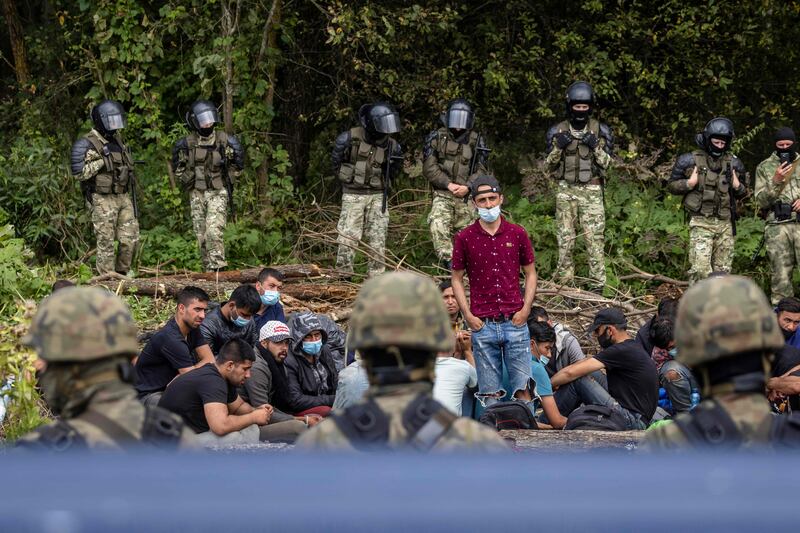Afghans have replaced Syrians as the largest group of asylum seekers in the EU, with applications rising sharply since the fall of Kabul.
There were more than 17,000 asylum claims by Afghans in September, the first full month after the Taliban victory, up from 10,000 in August.
It ended seven consecutive years in which Syrians, who made 9,100 applications in September, had been the most frequent claimants.
The new figures from the European Asylum Support Office showed total claims in Europe at their highest since before the pandemic.
Traffic on migration routes slowed sharply in the early months of the virus outbreak, but picked up again amid easing restrictions and political developments in Afghanistan and Belarus.
About 56,000 Afghans had asylum claims pending at the end of September, amid frustration in some quarters about the slow pace of resettlement.
Some Afghans in Europe have described a demoralising experience as they await word on their future and struggle to help relatives at home.
Humanitarian groups have given warnings of a dire winter in Afghanistan, while European governments raised the alarm over the reported killings and disappearances of former Afghan security personnel.
The alleged actions “constitute serious human rights abuses, and contradict the Taliban’s announced amnesty,” said a statement by 22 governments including the UK, US and Germany.
Of the Afghans who did receive a decision in Europe, about 90 per cent were either approved as refugees or granted a lesser status known as subsidiary protection.
Despite the effect of events in Kabul, the number of Afghans seeking asylum is well below the peak it reached during the 2015 refugee crisis.
More than 38,000 Afghans sought protection in November 2015, although the rate of acceptance was not as high.
Anticipating an influx from Afghanistan, EU countries tightened border security last summer and promised to prevent a repeat of the chaos six years ago.
But thousands of people were flown from Kabul in the days after the Taliban victory, with some of the evacuees subsequently granted asylum.
This led to a smaller number of unaccompanied child migrants from Afghanistan, since minors flown out of Kabul were generally not alone.
Nonetheless, there were at least 1,350 unaccompanied Afghan children seeking asylum, making up almost half of that contingent in Europe.
The figures cover 29 countries in the EU+, which includes Norway and Switzerland as well as the bloc’s members.
“This year, Afghan applications have been increasing notably since March,” the agency said.
“As a result, for the first time on record… Afghans became the largest group of applicants in the EU+ in August.”
Elsewhere, Turkish nationals made 3,000 claims, while about 2,900 Iraqis sought asylum after many were caught up in the border crisis in Belarus.
EU leaders sought to shut down the route through Belarus by leaning on Iraq’s government to stop flights to Minsk.
Some Belarusians themselves filed asylum claims in the EU, with about 85 per cent of them accepted.
There were sharp rises in applications from North Macedonia, Venezuela, Colombia, Egypt and Armenia.







